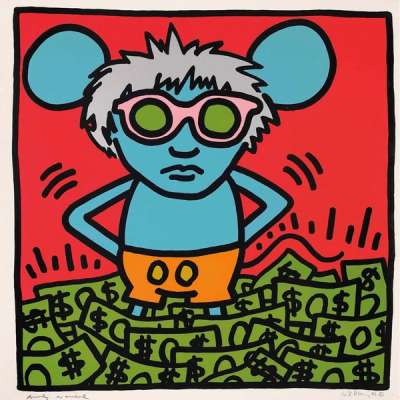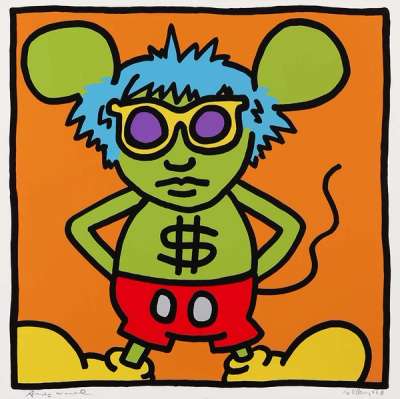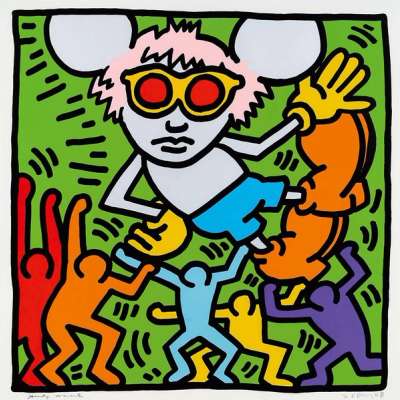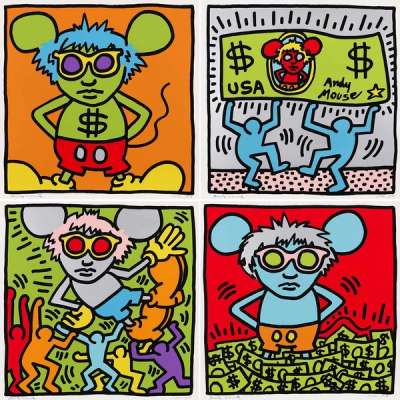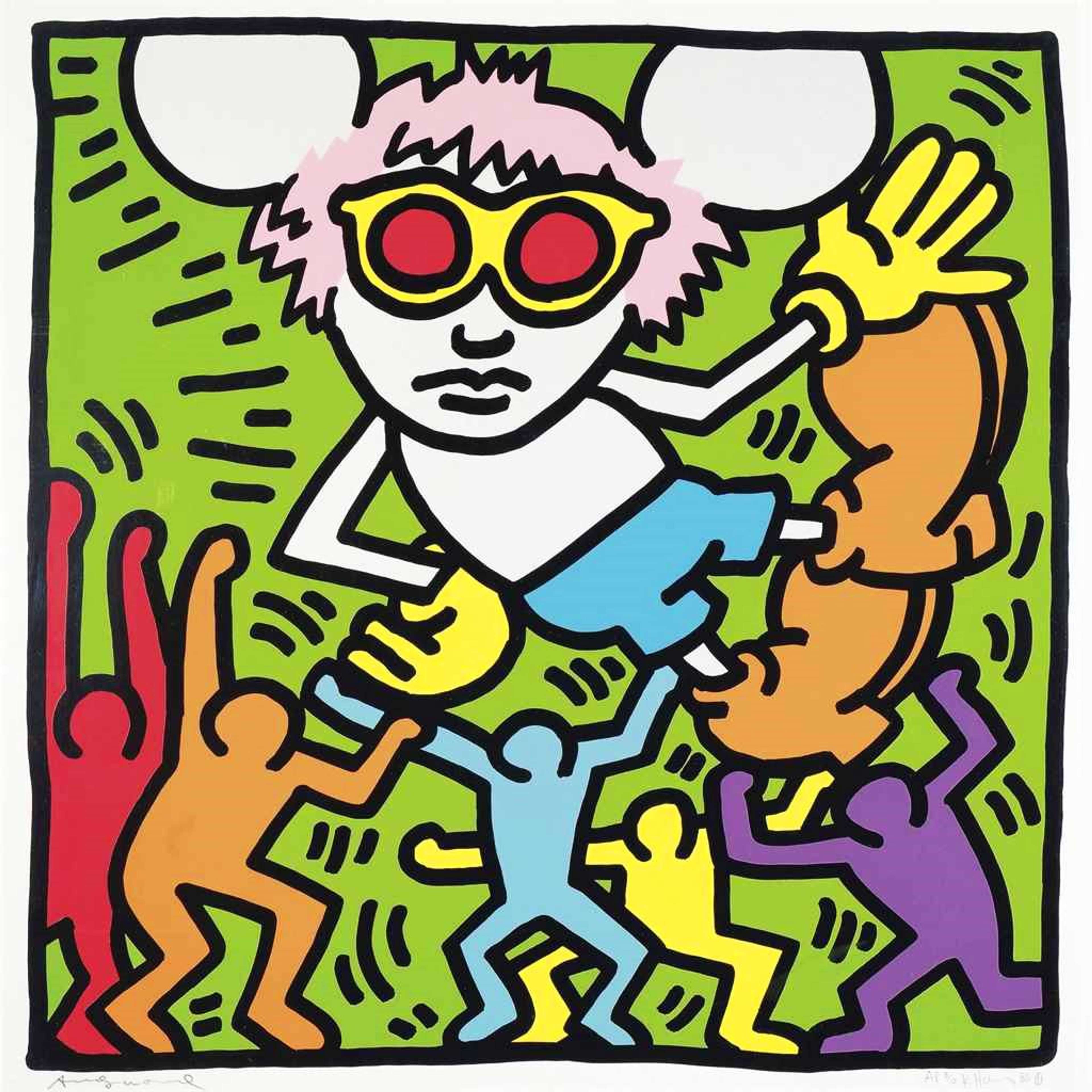Andy
Mouse
Keith Haring's 1986 Andy Mouse series, comprising four screen-prints, pays homage to his artistic education, particularly Andy Warhol and Walt Disney. A cartoon Warhol is playfully depicted with Mickey Mouse ears and accessories, swimming in dollar bills and dancing in a club setting.
Keith Haring Andy Mouse For sale
Andy Mouse Value (5 Years)
Works from the Andy Mouse series by Keith Haring have a strong market value presence, with 35 auction appearances. Top performing works have achieved standout auction results, with peak hammer prices of £825322. Over the past 12 months, average values across the series have ranged from £85898 to £150000. The series shows an average annual growth rate of 6.95%.
Andy Mouse Market value
Auction Results
| Artwork | Auction Date | Auction House | Return to Seller | Hammer Price | Buyer Paid |
|---|---|---|---|---|---|
 Andy Mouse 3 Keith Haring Signed Print | 5 Jun 2025 | Swann Galleries | £68,000 | £80,000 | £100,000 |
 Andy Mouse 1 Keith Haring Signed Print | 30 Oct 2023 | Bonhams New York | £136,000 | £160,000 | £210,000 |
 Andy Mouse 2 Keith Haring Signed Print | 24 Oct 2023 | Sotheby's New York | £119,000 | £140,000 | £190,000 |
 Andy Mouse (complete set) Keith Haring Signed Print | 29 Sept 2023 | Christie's New York | £671,500 | £790,000 | £990,000 |
 Andy Mouse 4 Keith Haring Signed Print | 16 Mar 2023 | Christie's London | £153,000 | £180,000 | £230,000 |
Sell Your Art
with Us
with Us
Join Our Network of Collectors. Buy, Sell and Track Demand
Meaning & Analysis
Characteristically playful, Keith Haring’s Andy Mouse series from 1986 shows Pop-Art king Andy Warhol in a pair of mickey mouse swimming shorts Warhol’s influence on Haring was undeniable, in Haring’s own words, 'Warhol’s life and work made my work possible. … he was the first real public artist and his art and his life changed our conception of art and life in the 20th century'.
Here Haring pays tribute to Warhol, depicting him wearing Mickey Mouse shorts – itself a tribute to his early education, which began with copying Walt Disney films and Dr Seuss cartoons – with his trademark spiky wig. Representing two of the most important figures of the Pop Art movement, this is one of the most sought after editions in Haring’s oeuvre and a striking example of his mastery of screen printing as a medium.
Printed in seven colours – black, grey, green, blue, yellow, red, pink and orange – in an edition of 30, the Andy Mouse series is significant for its formal qualities as well as its subject. Though Haring had experimented with print techniques such as lithography in the late 1970s it wasn’t until 1983 that he began making screen prints. Adopted from the world of commercial printing, this method offered a way of creating multiple images with vivid colours and little variation between prints. This move was undoubtedly due in part to the medium being popularised by Warhol. It soon became evident that the energy and curiosity Haring demonstrated for painting translated perfectly into printmaking and he began to work with publishers across the US, Switzerland, Japan, Germany, France, Denmark and Holland, producing ever more inventive and daring work. Though many of his prints were made in editions of 100 or more, there is an element of precision in every single one that shows the level of care with which he supervised the process.
